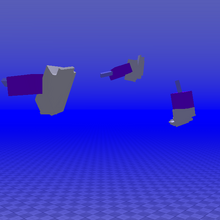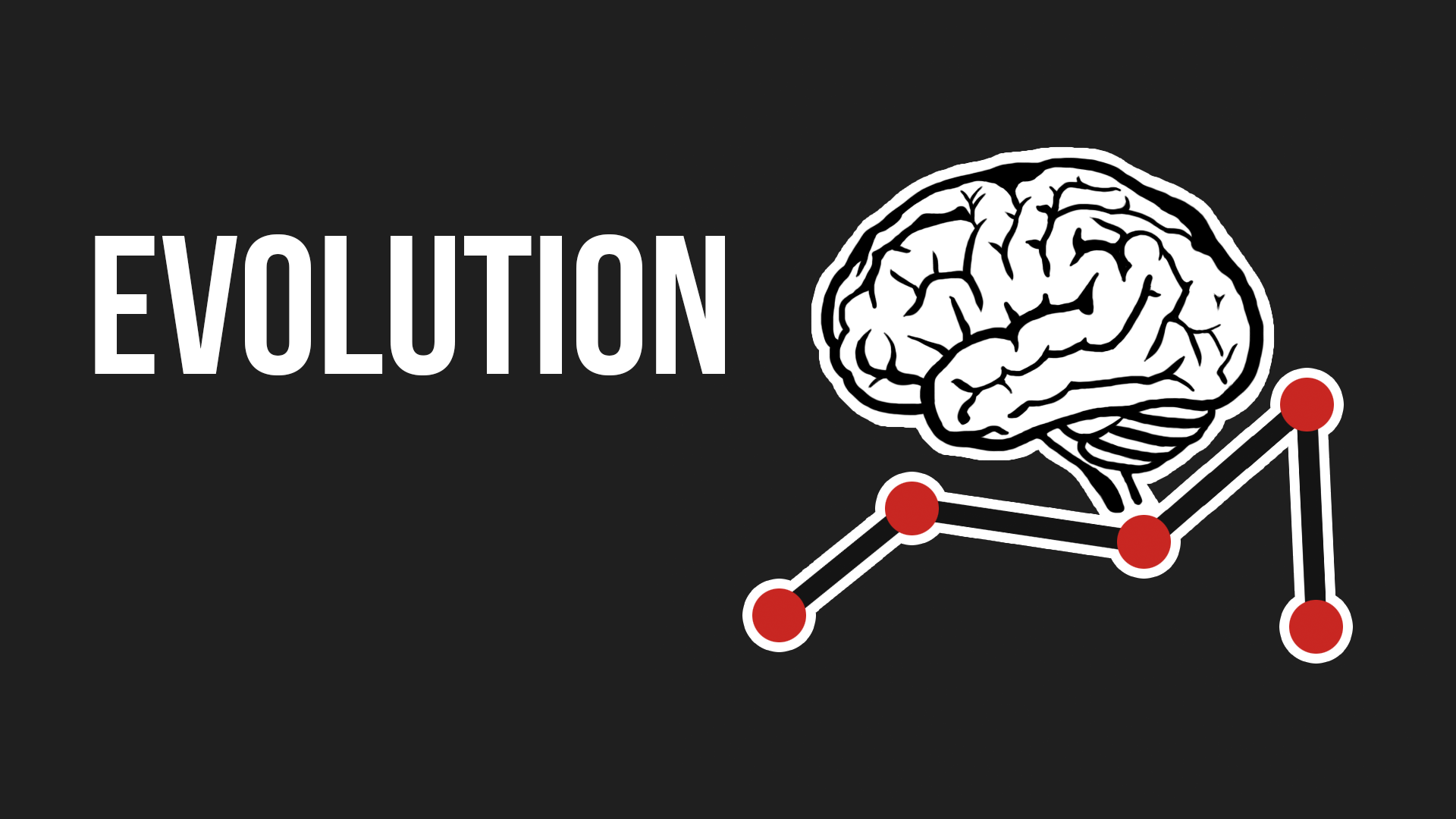- 3d Virtual Creature Evolution Download Mac Os
- Creature 3d Download
- 3d Virtual Creature Evolution Download Machine
- 3d Virtual Creature Evolution Download Mac Torrent
- 3d Evolution Software
Evolved Virtual Creatures
Karl Sims, 1994, 4:08
3D Virtual Creature Evolution, abbreviated to 3DVCE, is an artificial evolution simulation program created by Lee Graham. The website is currently when? down. Its purpose is to visualize and research common themes in body plans and strategies to achieve a fitness function of the artificial organisms generated and maintained by the system in their given environment. 3DVCE or 3D Virtual Creature Evolution (sometimes abbreviated to just 3D Creature Evolution) is a command-line evolution simulator written in C by Lee Graham for Windows and also Mac and Linux using a program called Wine. A 3D screensaver that simulates creature evolution. BreveCreatures Screensaver is a curious. Valuta questa App. BreveCreatures Screensaver is a curious 3D screensaver that features randomly-generated creatures formed by rectangular body parts appear in a virtual world. BreveCreatures Screensaver is a curious 3D screensaver that features randomly-generated creatures formed by rectangular body parts appear in a virtual world. The creatures use their limbs to wander around their virtual world. The maximum number of creatures that can appear is 25.
Beast mode free download - BEAST MODE, Beast Wars: Transformers demo, The Mark of the Beast, and many more programs. Spore is a 2008 life simulation real-time strategy God game developed by Maxis, published by Electronic Arts and designed by Will Wright, and was released for Microsoft Windows and Mac OS X.Covering many genres including action, real-time strategy, and role-playing games, Spore allows a player to control the development of a species from its beginnings as a microscopic organism, through.
Swimming | Jumping | Following | Competing |
This video shows results from a research project involving simulatedDarwinian evolutions of virtual block creatures. A population ofseveral hundred creatures is created within a supercomputer, and eachcreature is tested for their ability to perform a given task, such theability to swim in a simulated water environment. Those that are mostsuccessful survive, and their virtual genes containing codedinstructions for their growth, are copied, combined, and mutated tomake offspring for a new population. The new creatures are againtested, and some may be improvements on their parents. As this cycleof variation and selection continues, creatures with more and moresuccessful behaviors can emerge.The creatures shown are results from many independent simulations inwhich they were selected for swimming, walking, jumping, following,and competing for control of a green cube.
Software and Animation: Karl Sims
Narration: Eric Hansen, thanks to the Berlin VideoMath Festival
Thanks to: Gary Oberbrunner, Matt Fitzgibbon, & Lew Tucker
Hardware: Connection Machine CM-5
See also this episode ofPBSScientific American Frontiers: 'Life's Big Questions' from 1994 whichincludes some additional footage, and Alan Alda discussing the project.
This video also shows Virtual CreatureBloopers with some outtakes in which unexpectedmethods of cheating were discovered.
For related technical publications, see:
K.Sims, Computer Graphics (Siggraph '94 Proceedings), July 1994, pp.15-22.

'Evolving 3D Morphology and Behavior by Competition'
K.Sims, Artificial Life IV Proceedings, ed.by Brooks & Maes, MIT Press,1994, pp.28-39.
Back to other work by Karl Sims
©1994, Karl Sims, All rights reserved.
3D Virtual Creature Evolution title image displaying a screenshot of a creature. | |
| Developer(s) | Lee Graham |
|---|---|
| Platform | Microsoft Windows, Linux |
| Available in | English |
| Type | Simulation |
| Website | [1] |
3d Virtual Creature Evolution Download Mac Os
3D Virtual Creature Evolution, abbreviated to 3DVCE, is an artificial evolution simulation program created by Lee Graham.[1] The website is currently[when?] down. Its purpose is to visualize and research common themes in body plans and strategies to achieve a fitness function of the artificial organisms generated and maintained by the system in their given environment. The program was inspired by Karl Sims’ 1994 artificial evolution program, Evolved Virtual Creatures.[2][3] The program is run through volunteers who download the program from the home website and return information from completed simulations. It is currently[when?] available on Windows and in some cases[clarification needed]Linux.
Settings[edit]
3DVCE uses evolutionary algorithms to simulate evolution. The user sets the body plan restrictions (maximum number of segment types, branching segments’ length and depth limits, and size limits) and whether fitness score is scaled in relation to size. Limb interpenetration is also an option. Reproduction / population settings include the size of each population and their run time (how long each individual has to attain a fitness score), percentage of individuals who get to reproduce (tournament size), what percentage sexually or asexually reproduce, and selection type is then determined. Crossover rate determines what percentage of an individual is created via crossover of parents and mutation. Mutation rate in body and brain is then determined. Specific mathematical operations and values can be attributed to the creature’s brain as well.[4]
Fitness function is then determined. Artificial organisms’ fitness score is determined by how well they achieve their fitness goal within their evaluation time. Fitness functions include distance traveled, maximum height, average height, “TOG” (determined by amount of time creature is in contact with ground), and “Sphere” (determined by creature’s ability to catch and hold spheres). These goals are not individualized and can be set to specific strengths (from zero, as not having an influence on fitness, to one, or having maximum influence) to determine the fitness goal. What generations the fitness function applies to can also be set. The environment, or “Terrain”, is then determined. This includes a flat plain, bumpy terrain (in which a hill is generated around creature that constantly inclines as distance is traveled from the creature’s spawning point), water (a low gravity simulator, non-functional), and “spheres” (spheres are generated above the creature to catch).[5]
Simulation[edit]
Everything in the simulation is viewed from a first person viewpoint. After settings are determined, the first generation is generated from randomly created individuals. All creatures appear at the same spawning point and are made of segments or rectangular prisms connected to others at joints. Colors are assigned to segment types randomly. Segment type is determined by the size and joints a segment has. Colors indicate nothing else than that. These first generation creatures move randomly, with no influence from the fitness goal. Creatures with the largest fitness value reproduce and the following generation is based on this reproduction. Eventually, patterns in the population form and fitness increases even further. Fitness function can be changed during the simulation to simulate environmental changes and individual runs can be duplicated to simulate different lineages or speciation.[6][7]
3DVCE is not only for evolutionary research. Objects can also be spawned for graphics and simulated physics tests. This includes pre-installed blocks, spheres, grenades, and structures that can either be thrown from camera or generated at a spawning point. Artificial gravity can also be manipulated. Random and archived creatures can also be re-spawned to manipulate or view. Lee Graham has also included a TARDIS in the simulation, which when moved into can teleport the camera back to the original spawning point.[8]
Creatures[edit]

Creature 3d Download
Convergent evolution occurs often in 3DVCE, as similar structures and behaviors of the creatures form to maximize fitness. Two-Armed Jumpers consist of a small core and two large symmetrical 'wings', and evolve in response to jumping and distance requirement. These creatures propel themselves forward using their limbs by jiggling or flapping them. Jumping Ribbons and Springs consist of a chain of segments and evolve in response to max height and distance. They contract or curl up and stretch out their body to leap into the air. Rolling Ribbons and Springs are very similar to the previous group, except they are often larger and segments are more repetitive. They evolve in response to average height, distance, and TOG (touching the ground). They roll on the ground to propel their head into the air to attain height while still touching the ground. Some simply roll in a horizontal fashion like a cylinder. Single-Joint Powered Creatures have more erratic structures and evolve in response to distance on bumpy terrain. They have one large segment in back which kicks the creature forward, but being poorly balanced they use the rest of their bodies to get back up after stumbling or prevent stumbles altogether.
3d Virtual Creature Evolution Download Machine
Many other types of creatures also form that do not necessarily fit the four main groups previously described by Lee Graham. Tall stick-like creatures also evolve to attain maximum height. Some users have been able to fix the water simulator to evolve creatures that swim. Many other creatures evolve that share traits of multiple groups. There are currently[when?] over 220 creatures archived on the main website, which can be found on YouTube by visiting the 'Creature Mann' channel.
3d Virtual Creature Evolution Download Mac Torrent
References[edit]
- ^Graham, Lee; Oppacher, Franz. 'Speciation Through Selection and Drift'. ACTA Press.Cite journal requires
|journal=(help) - ^Sims, Karl (1994). 'Evolving Virtual Creatures'(PDF). SIGGRAPH ‘94 Proceedings.
- ^Sims, Karl (1994). 'Evolving 3D Morphology and Behavior by Competition'(PDF). Artificial Life IV Proceedings.
- ^Heryadi, Yaya (2007). 'Simulating Biped Jumping Behavior using Evolutionary Algorithm'. ISSN1978-774X.Cite journal requires
|journal=(help) - ^Barry Green (June 28, 2008). 'TAM 6 Highlights: 3DVCE-Lee Graham'. Ottawa Skeptics. Retrieved April 10, 2011.
- ^Morgan, Abbie (September 7, 2008). 'Standing On The Shoulders Of Giants: Video games are reshaping how we perform and promote science'. SEED Magazine. Retrieved February 21, 2011.
- ^Dubrofsky, Elan (2008). 'Evolution Mutates Beyond Biology'(PDF). UBC. Archived from the original(PDF) on 2012-03-19. Retrieved September 6, 2011.Cite journal requires
|journal=(help) - ^'Blue Strand: Evolved Virtual Creatures'. Penviv. Retrieved April 10, 2011.